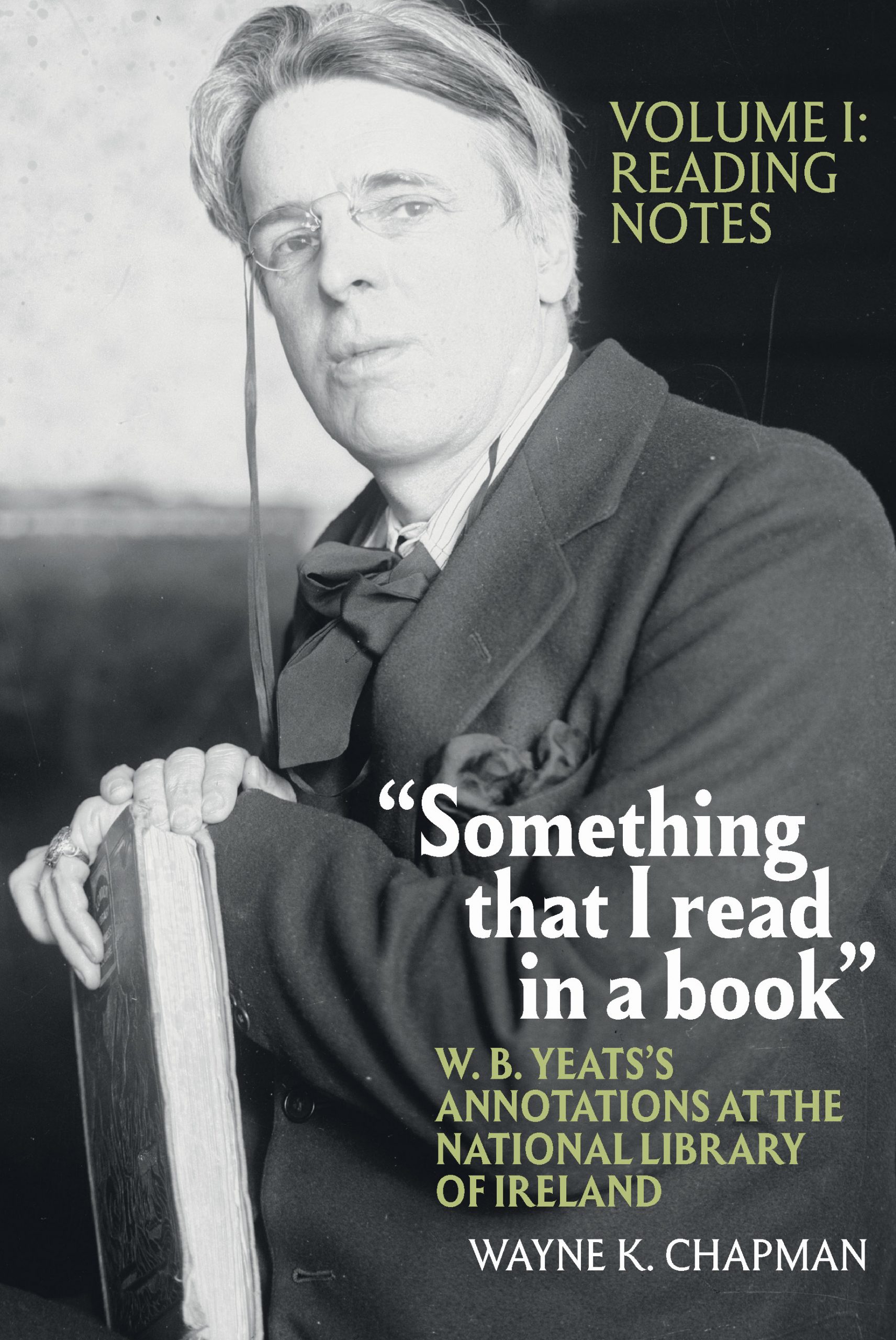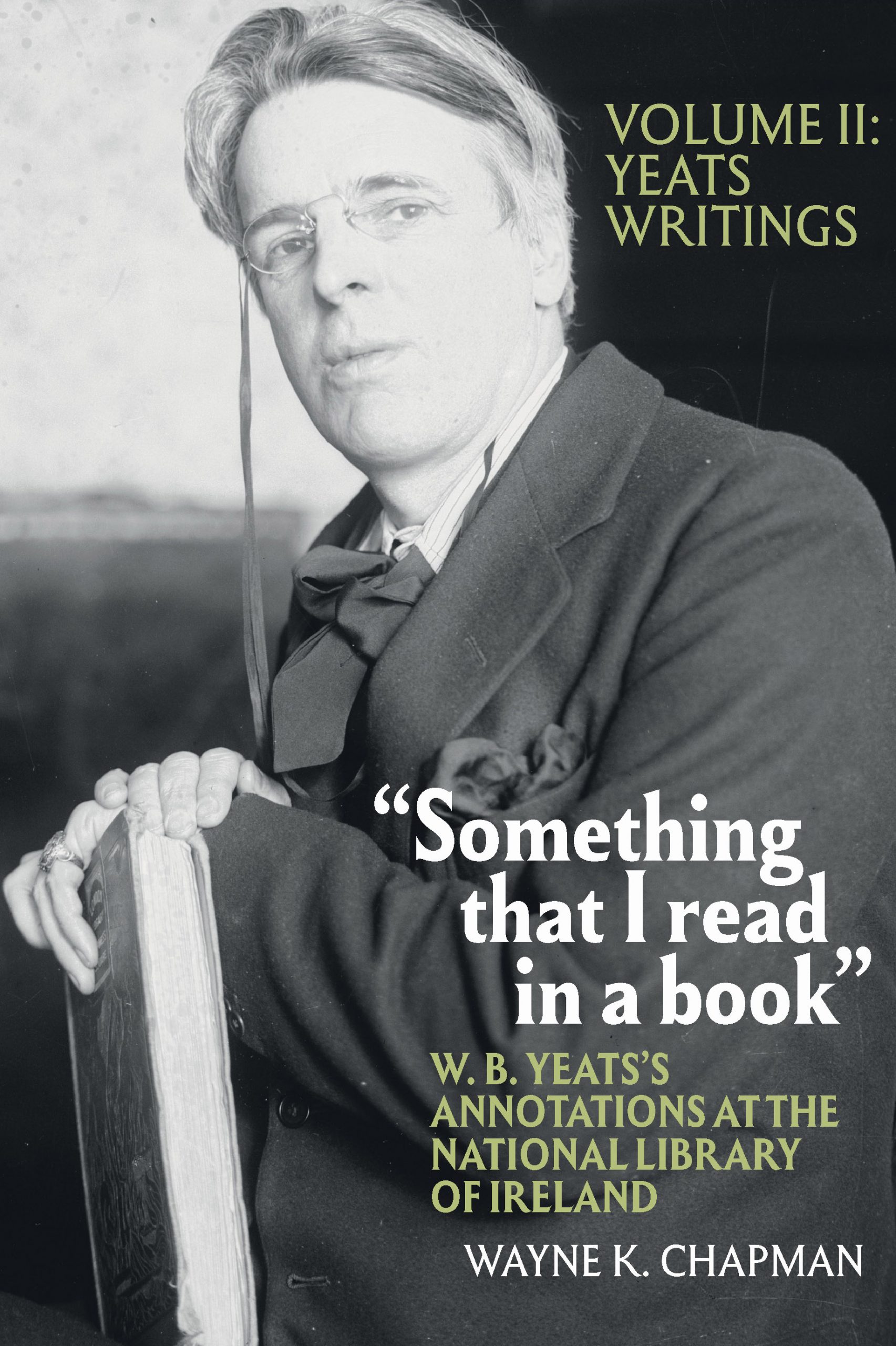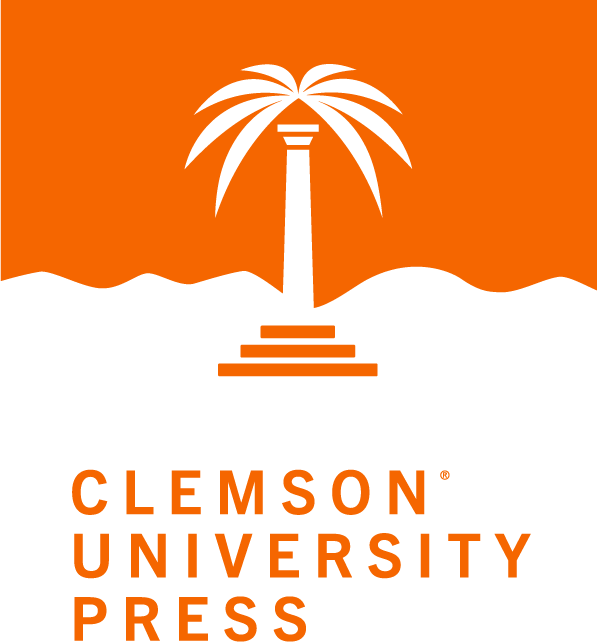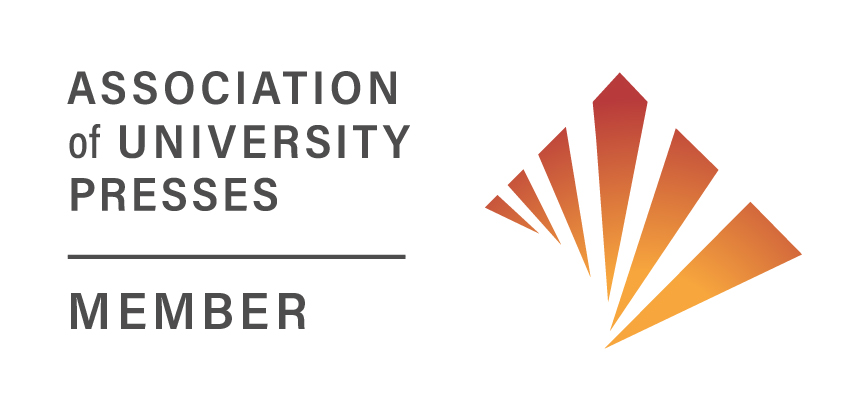January 28, 2022 marks the 83rd anniversary of the death of W. B. Yeats in 1939. The anniversary nearly coincides with the February 1, 2022 publication of Wayne K. Chapman’s study “Something that I read in a book”: W. B. Yeats’s Annotations at the National Library of Ireland in two volumes (I: Reading Notes; and II: Yeats Writings). These coordinate but separately indexed volumes are the culmination of thirty-five years’ experience with books acquired by the poet in his lifetime and compiled in Chapman’s short-title catalogue, The W. B. and George Yeats Library (2006, 2019), also published by Clemson University Press. In this blog post, Professor Chapman discusses the poet’s working library as an integral part of the entire W. B. Yeats archive at the National Library and considers how the library speaks to the “afterlife” of the poet, somewhat after Auden’s famous elegy.
Did that play of mine send out
Certain men the English shot?
Did words of mine put too great strain
On that woman’s reeling brain?
Could my spoken words have checked
That whereby a house lay wrecked?
And all seems evil until I
Sleepless would lie down and die.
—W. B. Yeats, from “The Man and the Echo”
Yeats registers an attitude of doubt in this late poem as to the merit of words employed in certain roles he had assumed in the body of his life’s work. The celebrated author’s questions are here coldly answered in Echo’s reply: “Lie down and die.” Rightly, in the elegy “In Memory of W. B. Yeats,” Auden would soon emphasize that the ailing poet had “disappeared in the dead of winter” and that his death had been “kept from his poems.” Despite his very personal extinction in fact, Yeats had become “his admirers” because his words were deemed of great value to the living. Although poetry might make “nothing happen,” it is nonetheless essential to survival, inciting one to sing, as Yeats did, amidst the nightmare of history. The literary afterlife of the poems (or shelf-life, to put it crudely) is of a different order than is the afterlife of a mortal poet. They are related but different ideas, and we can only measure and understand the former with any certainty because poetry, being a thing made, is tangible, even literally something to be grasped, in a published work and in most pretextual states of it that may exist in an archive.
In thirty-seven years since encountering my first manuscript by Yeats or any of the annotated books in his library, I never doubted his astonishing gift as the twentieth century’s greatest poet in the English language, in addition to his being a superb dramatist, fiction writer, and man of letters. My interest has been attentive to the mystery of his individual works—to how they came to be created, assembled, or disassembled and remade to meet new demands. Influences might be tracked through his stylistic development as confirmed by evidence in manuscripts and the iterations of printed editions. Sometimes they can be recovered in the reading notes he left in books by other authors. Such evidence, indeed, abounds in his copies of Blake, Shelley, and Swedenborg. However, until present pandemic times made urgent the task of finishing my study of the library, I would never have thought to look for the origin of Yeats’s elegiac poem “Beautiful Lofty Things” in Sacheverell Sitwell’s book Canons of Giant Art, Twenty Torsos in Heroic Landscapes (1933), where, on the back flyleaf, Yeats had been moved to respond to a sentiment found in the closing lines of “Agamemnon’s Tomb”:
We are the world and it will end with us:
The heart is not a clock, it will not wind again,
The dead are but dead, there is no use for them. . . .
I do believe in serendipity, though, since I’ve encountered it so many times. Of course, Sitwell’s longish poem was chosen for Yeats’s notoriously quirky anthology The Oxford Book of Modern Verse (1936), a late project responsible for about fifty poetry collections marked or mutilated in the library to extract text. The origin of “Beautiful Lofty Things” is only one of half a dozen instances in which Yeats’s reading led so directly to his creative writing. Bibliographic details and transcriptions in Volume I of “Something that I read in a book” (Reading Notes) are followed by a full complement in Volume II (Yeats Writings), with a Prefatory Note to bridge the two by listing journals, newspapers, and anthologies that bear emendations in Yeats’s hand. The second volume concludes with a number of appendices on the evolution of the later standard editions of his poems and plays, on the major annotated titles, on provenance, and on the books produced at the Dun Emer/Cuala Press in the course of his editorship and family enterprise. Featured are amendments that Yeats made in copies of relevant editions of his own works that, by “paste-pot” method, he revised for later editions.

 The two volumes are analogous to the bisecting peripheral lines usually drawn to define an archeological “dig.” The excavation begins with Purgatory, a play Yeats completed in his last days with sympathy for the degraded condition of the protagonist (Old Man), who struggles to recall the rich legacy to which he was heir but lost to parents who now tragically re-enact as ghosts the drunken consummation that brought down the house and its library of “old books and books made fine.” The Gregory library at Coole Park, as in “The Man and the Echo,” was one such to which the play alludes. Yeats was familiar with many and a frequenter of public libraries—including the British Museum Library, the London Library, the National Library of Ireland, and Royal Dublin Society archives—complicating the logic of connection between the books he owned and his first encounter with their contents. For example, his acquaintance with Boehme’s Mysterium Magnum (1623), cited in The Unicorn from the Stars (co-written with Lady Gregory), predates the uncut edition of 1924 that Yeats eventually owned. Similarly, Burton’s Anatomy of Melancholy, while annotated, was only partly cut for use defined by sections also cut in the index, thus not from the time of the poet’s first reading, elsewhere, of a passage on Qusta ibn Luqa (spelled in Burton “Costaben Luca”).
The two volumes are analogous to the bisecting peripheral lines usually drawn to define an archeological “dig.” The excavation begins with Purgatory, a play Yeats completed in his last days with sympathy for the degraded condition of the protagonist (Old Man), who struggles to recall the rich legacy to which he was heir but lost to parents who now tragically re-enact as ghosts the drunken consummation that brought down the house and its library of “old books and books made fine.” The Gregory library at Coole Park, as in “The Man and the Echo,” was one such to which the play alludes. Yeats was familiar with many and a frequenter of public libraries—including the British Museum Library, the London Library, the National Library of Ireland, and Royal Dublin Society archives—complicating the logic of connection between the books he owned and his first encounter with their contents. For example, his acquaintance with Boehme’s Mysterium Magnum (1623), cited in The Unicorn from the Stars (co-written with Lady Gregory), predates the uncut edition of 1924 that Yeats eventually owned. Similarly, Burton’s Anatomy of Melancholy, while annotated, was only partly cut for use defined by sections also cut in the index, thus not from the time of the poet’s first reading, elsewhere, of a passage on Qusta ibn Luqa (spelled in Burton “Costaben Luca”).
The National Library of Ireland possesses 2,650 copies of books by authors other than Yeats that once belonged to him or his wife at the time of his death. “Something that I read in a book” is fundamentally a resource to enable scholars and students in Yeats studies to explore the materials in his library, as most of his unpublished papers are at hand for consultation in the Manuscript Reading Room. The first volume is a selection of detailed descriptions for only those 601 items bearing inscriptions, major and minor, related to reading, whereas the second volume, containing descriptions of 135 such items, tells the story of how Yeats built his oeuvre from the secure set of editions locked away in his library. Both volumes will likely affect scholarly engagement with Yeats’s thinking and writing in the archives in Dublin and anywhere to which kindred materials may have been dispersed since 1939. The afterlife of the oeuvre and the study of its making is bound to increase now as a consequence.
In Auden’s poem, “The words of a dead man / Are modified in the guts of the living.” Readers are bound to encounter instances of comparatively rough or tentative work left by the man who died. For one thing, Yeats’s handwriting is most difficult to interpret when his thinking seems to have been most exploratory. Yet it also seems that his intentions are usually clear when difficulties in the marginalia are resolved from context or when one considers the common logic of drafting and revising. Finally, as a rule about Yeats and words, in this sense: if a reader has doubts, the archives are truly a welcome destination.

